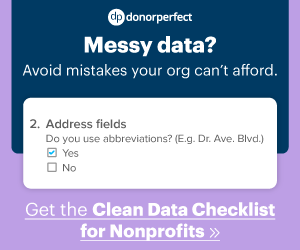
Starting a nonprofit organization is a meaningful way to transform your passion into positive change. Whether you’re advocating for education, the environment, animals, healthcare, or social justice, this guide will walk you through every essential step, from defining your mission to building community support.
Recent data shows that there are nearly 2 million nonprofit organizations in the United States, and that Americans contribute nearly $560 billion to their favorite causes each year. As communities grow and shift, more nonprofits are forming to address various needs.
Let’s dive into how to start a nonprofit organization and ensure its financial stability.
What is a nonprofit organization?
A nonprofit organization (NPO) is a legal entity that operates for charitable, educational, religious, scientific, or other community-driven purposes. Unlike for-profit businesses, nonprofits reinvest their earnings into their mission rather than distributing them to shareholders or owners.
Forming a nonprofit involves many steps before programs, staff, and donation options are up and running. For example, at some point, it will be important to purchase and implement a nonprofit Customer Relationship Management (CRM) system—a fundraising system—to manage donor engagement and gift processing functions.
Steps to starting a nonprofit organization
1. Define your mission and vision
Before diving into the logistics, take time to clearly define your nonprofit’s purpose. Your mission and vision will serve as the foundation of your organization, shaping its programs, policies, fundraising activities, and outreach strategies.
Your mission should:
- Clearly describe the problem you aim to solve and why it’s important
- Identify your target population and the communities and individuals you aim to serve
- Explain your unique approach and value, including how it will complement or improve upon existing efforts
Example mission statement: Our mission is to provide free after-school tutoring and mentorship programs to underserved students, helping them build confidence, improve academic performance, and achieve long-term success.
Your mission statement will not only serve as a guide for decision-making, but also play a crucial role in attracting donors, volunteers, and supporters. Once your mission is clearly defined, you can develop a vision statement that describes your long-term aspirations and what ultimate success looks like for your organization
Your vision should:
- Paint a picture of your ideal future
- Inspire donors, volunteers, and your team
Example vision statement: We envision a future where every child, regardless of socioeconomic background, has access to high-quality education and mentorship, empowering them to reach their full potential and contribute to a thriving society.
In summary, while the mission statement focuses on the immediate goals and actions of your nonprofit, the vision statement describes the long-term change you hope to achieve.
2. Conduct market research
Before launching your nonprofit, it’s critical to understand the landscape you’ll be entering. Conducting thorough market research will help you:
- Identify gaps in services – Research other organizations working in your area of interest. What services do they offer? Where are there unmet needs or underserved populations?
- Validate your idea – Ensure your mission addresses a real and current need within the community.
- Discover partnership opportunities – Uncover opportunities to partner with other nonprofits, government agencies, or local businesses.
- Avoid duplicating existing services – Check who’s already doing similar work; it helps you differentiate your organization and avoid duplicating efforts.
- Inform your programs – Gain insights that can help shape your programs and services to better align with what your audience truly needs.
Pro tip: Use community surveys, stakeholder interviews, and analysis tools to shape your strategy.
3. Choose a name
Your nonprofit’s name is one of the first impressions you’ll make, so choose carefully. It should communicate your mission, resonate with your target audience, and be easy to remember. Here are some best practices:
- Reflect your mission – Hint at the cause you support or the impact you hope to make.
- Keep it simple and memorable – Avoid overly complex or lengthy names. Think about how easily your name can be said aloud, remembered, and spelled.
- Check availability:
- State registry – Make sure the name is available in your state’s business name database.
- IRS exempt organizations list – Check for similarly named tax-exempt organizations to avoid confusion.
- Domain name and social media – Ensure your name (or a close variation) is available as a website domain and on social media platforms.
- Trademark search – Conduct a trademark search to avoid legal conflicts and protect your brand.
Pro tip: Once you choose your name, consider registering a domain and reserving social media handles, even if you won’t launch your website immediately.
4. Complete legal and tax requirements
Form a board of directors
Your board of directors will oversee your nonprofit’s operations and governance. Select individuals who are passionate about your cause and bring diverse skills (e.g., legal, financial, human resources, and marketing expertise).
Pro tip: To ensure your time with your board is effective, check out our 10 Steps to Make the Most of Your Nonprofit Board Meeting.
Draft bylaws
Bylaws are the rules that govern your nonprofit. They outline board responsibilities, meeting procedures, and decision-making processes.
File articles of incorporation (register as a nonprofit in your state or province)
Each state or province has different requirements, but generally, you’ll need to:
- File Articles of Incorporation with your state’s corporate filing office.
- Appoint a registered agent to receive legal documents on behalf of your nonprofit.
Obtain an employer identification number (EIN)
An EIN is required for tax purposes and allows you to open a nonprofit bank account. Apply for one free through the IRS website.
Apply for 501(c)(3) tax-exempt status
To receive tax-exempt status, file Form 1023 (or Form 1023-EZ for smaller organizations) with the IRS. Approval allows donors to make tax-deductible contributions to your organization.
Register for state and local taxes
Depending on your state, you may need to apply for state tax-exempt status, sales tax exemptions, or other permits.
Open a business bank account
With your EIN and tax-exempt status, open a business bank account to keep your organization’s finances separate from personal accounts.
Establish your fundraising system and tools
Having the right technology in place from day one can save time, improve accuracy, and help you grow efficiently. Your technology resources should support fundraising, donor management, communication, financial reporting, and compliance.
Checklist:
- CRM fundraising system (e.g., DonorPerfect) to manage donors and donations
- Online donation forms and payment processing tools
- Email marketing and communication platforms
- Accounting and financial management software
- Grant tracking tools
- Volunteer management features
- Secure file storage and document-sharing tools (e.g., cloud storage)
- Event management software
- Website hosting platform and content management system (CMS)
DonorPerfect integrates seamlessly with your nonprofit’s fundraising tools—from online donation forms and email marketing to financial tracking and donor reporting.
Budget planning and financial forecasting
A thoughtful budget helps you allocate resources, manage expenses, and stay focused on your mission. Financial forecasting allows you to project future income and expenses so you can plan for growth and avoid shortfalls.
5. Develop a fundraising strategy
A strong fundraising strategy is about more than just raising money—it’s about building lasting relationships with the people who believe in your mission. Diversifying your revenue streams ensures financial stability and resilience, even during challenging times. Here are key fundraising methods to consider:
Individual donations
Encouraging individual contributions from supporters is the backbone of nonprofit fundraising. Use storytelling, donor appreciation, and effective communication strategies to attract and retain donors. From major donors to annual contributors, every dollar helps your cause.
DonorPerfect simplifies donor tracking, automates thank-you letters, and boosts donor engagement.
Corporate partnerships
Partnering with businesses can bring financial support and credibility. Many companies offer sponsorship programs, in-kind donations, and employee-matching gifts. Offer brand exposure in return for sponsorship support.
Grant funding
Apply for grants from foundations, government agencies, and corporate giving programs. Writing a compelling grant proposal is essential for securing funding. When working with corporate partners on sponsorship or employee giving initiatives, for example, be sure to ask if their organization (or company-affiliated foundation) offers programmatic grant support that aligns with your mission. This is another great way to connect your teams while making an impact.
Fundraising events
Hosting events like auctions, charity runs, and galas can raise money while building community engagement. Virtual fundraising events have also gained popularity and can expand your donor reach with limited expenses.
Streamline every step of your fundraising events with DonorPerfect. From registration forms to ticketing and donor follow-up, our event tools help you save time and raise more.
Online fundraising
Leverage digital platforms to raise funds through crowdfunding, peer-to-peer fundraising, and recurring donation programs.
DonorPerfect is your fundraising success partner. From integrated online donation forms to donor engagement tracking, our fundraising system helps you raise more with less effort.
6. Create your nonprofit’s website and social media presence
Your website is your nonprofit’s digital home, while social media is where you build your community and establish credibility. Make it easy for visitors to learn your story, contribute, and stay connected. Use clear navigation, compelling visuals, and mobile-responsive design to optimize engagement.
Your digital presence should:
- Share your story and impact
- Offer easy donation and volunteer opportunities
- Include email capture forms
- Link to a user-friendly donation page
- Highlight impact with photos, videos, and testimonials
- Feature an events calendar
- Include a blog or news section
DonorPerfect’s integrated donation forms convert more website visitors into donors. Customize your forms to match your brand and embed them directly on your website.
7. Maintain nonprofit compliance and reporting
Maintaining compliance is essential to preserving your nonprofit’s legal standing and tax-exempt status. Nonprofits are required to file annual reports and tax forms, such as Form 990, as well as state-specific filings and renewals. Noncompliance can result in penalties or even the loss of your tax-exempt designation.
In addition to timely filing, strong internal recordkeeping practices are key to staying organized and audit-ready. Make sure to maintain clear, up-to-date documentation in the following areas:
- Accounting records – Track income, expenses, and financial statements to support transparency and good stewardship.
- Contributions – Document donor information and charitable contributions for IRS reporting and donor acknowledgments.
- Organization records – Keep minutes from board meetings, bylaws, policies, and incorporation documents securely stored and regularly updated.
- Program activities – Record the outcomes and scope of your nonprofit’s services and initiatives to demonstrate impact and fulfill grant reporting requirements.
DonorPerfect’s fundraising system helps you track deadlines, store documentation, and send alerts.
8. Build a dedicated nonprofit team
A nonprofit’s success relies on the people who power its mission. Building a dedicated, mission-driven team—both staff and volunteers—is essential for long-term impact. Here’s how to approach it:
- Hire mission-critical staff – Start by identifying and filling key roles, such as an executive director, program managers, and fundraisers. Focus on hiring individuals who not only bring professional expertise but also deeply connect with your cause.
- Recruit and empower volunteers – Volunteers are the heart of many nonprofits. Create meaningful opportunities that align with your mission, and provide training and recognition to keep them engaged and inspired.
- Foster a collaborative culture – Build a workplace culture rooted in collaboration, inclusion, and shared purpose. A positive environment encourages retention and keeps your team aligned with your organization’s values.
- Plan for succession – Leadership changes are inevitable. Reduce risk by identifying future leaders early and developing a clear succession plan to ensure your nonprofit’s stability and sustainability.
DonorPerfect supports your team’s work through donor engagement tools, volunteer management modules, and more.
9. Establish impact measurement and reporting
Tracking and sharing your organization’s results is key to demonstrating accountability, securing funding, and driving continuous improvement. Impact measurement helps stakeholders understand the value of your work and encourages deeper engagement from donors, partners, and the community.
- Set measurable goals – Define key performance indicators (KPIs) aligned with your mission, such as number of people served, programs delivered, or donor retention rates.
- Use data dashboards and CRM tools – Visualize trends, track outcomes, and monitor donor behaviors in real time.
- Tell your impact story – Showcase outcomes through compelling stories, visuals, and data in your newsletters, annual reports, and social media posts.
DonorPerfect dashboards help you track donor retention, average gift size, and other important metrics to evaluate your organization’s impact.
To build credibility and attract donors, nonprofits must track and communicate their impact effectively.
10. Strengthen community partnerships and local engagement
Successful nonprofits don’t operate in isolation—they thrive by forming strong, strategic relationships within their communities. These partnerships not only extend your reach, but also reinforce your nonprofit’s credibility and impact.
Ways to build effective partnerships:
- Collaborate with other nonprofits – Co-host events or create joint programs to address community challenges together. Consider forming a coalition around shared goals.
- Engage local schools and businesses – Offer internship opportunities, co-branded events, or volunteer programs that give these groups meaningful ways to support your mission.
- Leverage your board and volunteers – Your internal network often has valuable connections. Encourage them to initiate introductions and explore collaborative opportunities.
- Participate in civic and community groups – Join or speak at local networking groups, chamber of commerce meetings, and municipal planning sessions to raise your nonprofit’s profile.
- Advocate for your mission – Use public relations, digital storytelling, educational workshops, and local media to promote awareness around your cause and gain community buy-in.
Pro tip: Community partnerships often become lasting funding sources. By aligning with organizations that value your mission, you create opportunities for sponsorships, shared grant applications, and long-term donor engagement.
DonorPerfect helps you grow your community connections with personalized outreach and relationship tracking.
Starting a nonprofit requires planning, dedication, and community support—but with the right fundraising system, you can go from idea to impact faster and more efficiently. DonorPerfect is here to help every step of the way, from fundraising to donor engagement and impact reporting.
Are you ready to start a nonprofit organization and begin fundraising? DonorPerfect can serve as your centralized fundraising system, helping you connect with donors, reduce administrative tasks, and grow your mission.
Frequently asked questions
1. How much does it cost to start a nonprofit organization?
Costs vary by state, but generally, expect to pay $500-$2,000 for incorporation, IRS tax-exemption fees, and other legal requirements.
2. How long does it take to get 501(c)(3) status?
The IRS review process typically takes several months for larger organizations, though smaller nonprofits using Form 1023-EZ may get approved faster, such as within a few weeks.
3. How do I start a nonprofit organization with limited resources?
Start small and focus on your core mission. Many successful nonprofits begin with volunteer support, donated services, and low-cost digital tools. Consider fiscal sponsorship, partner with local organizations, and use a nonprofit CRM to manage fundraising and donor engagement efficiently as you grow.
4. Can a nonprofit make money while supporting its mission?
Yes! Nonprofits can generate revenue through donations, grants, and program-related sales, but all profits must support the organization’s mission.
Meet your fundraising success partner
To learn more about DonorPerfect, fill out the form below or call us at 800-220-8111
"*" indicates required fields







